In the second of a two-part special on feeding an ex-racehorse, Fred and Rowena Cook of Equine Management and Training, use scenarios to explain which diet your horse may need to get them to a healthy weight.
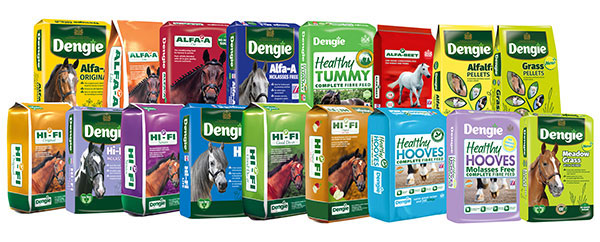
The Dengie Horse Feeds range has something to suit every need.
The horse in good condition
Not all TB’s need to gain weight or struggle to maintain their weight, but actually need their waistline keeping in check; this means keeping an eye on the calorie intake – just as we need to do if we want to control our weight. To maintain weight, a horse needs no more than 2% of his (ideal) bodyweight in total feed per day.
Sugar beet and alfalfa are excellent sources of fibre, as are dried grasses and grass nuts. Oat straw is also found in many chaff and fibre feed products. Alfalfa can be fed as a chaff or in pelleted form; Dengie Horse Feeds and Simple System Feeds are the most well-known for their excellent alfalfa and grass products; Simple System have recently introduced sainfoin as another alternative fibre feed.
The good doer
Even for horses that are in medium levels of work, feeding a fibre feed will provide all the MJ/kg required. As fibre is an excellent source of energy, there is actually no need to feed cubes or mixes; the Dengie range of fibre feeds is extensive and covers all ranges of energy and calorific requirements. However not all horses will eat optimum levels, so a high fibre cube/pencil can be used to make up some of the ration; most companies produce a fibre cube.
If you need a bit more ‘oomph’ remember that energy = calories so to give that extra bit of kick, a quick release element added to the ration is best. Some people opt to add a few oats, as the energy will be used up during work rather than being stored and added to the waistline. It is wrongly assumed that oats are the worst of all cereals, but they contain less starch than other grains and the fibrous husk reduces their energy density.
If feeding ad lib forage is not an option then a use of a low-calorie hay replacer (in part or in total) will allow trickle feeding and ensure the stomach is not left empty for long periods, which is detrimental to his health and well-being. Remember that if you are substituting forage with a hay replacer, the quantity fed should equate to the weight of forage not being given – unless the horse actually needs to lose weight. You should still include some long fibre in the diet if possible. Grass nuts are also a suitable forage substitute as is Dengie’s new Meadow Grass product as are high fibre cubes and certain fibre feeds such as Dengie Alfa-A Lite.
A balancer should be given, such as Baileys Lo-cal or Essential Balancer from Saracen, to ensure your horse is receiving his vits/mins quota.
Your horse might be a good doer but as he is being retrained as a riding horse, he will be needing to build muscle so he does still require quality protein. Protein will not expand the waistline, but lack of it will not allow good muscle formation (in conjunction with your work programme) so don’t overlook it! Alfalfa is an excellent source of quality protein.
If a horse is little dry in his skin or coat, or his hooves are cracking, owners look to adding more oil to the diet to rectify; this may work for some but ultimately if there is lack or imbalance in the vit/min element of the diet, the situation won’t improve because the metabolism (body function) is not able to work efficiently. So if you not feeding a balancer now is the time to do so.
Feeding for weight gain
Forage is the primarily element of the diet and ideally this should be offered ad lib; being such a great fibre source it will address weight gain. However, initially your new charge may not eat the ideal amounts until he has settled in to his new home, so don’t be alarmed. You could offer some short fibre alternatives such a dried grass product, as such products tend to be sweet and appetising. Eating forage promotes healthy gut without which whatever you feed is not going to have optimum benefit.
Just as with people, horses gain weight by eating a higher calorie diet. However your horse no longer has such a high energy requirement as he did when in training so a calorie-dense energy source, such as oil, is one of the best components to add to the diet if there is a considerable weight deficit – it provides 2.25 times as many calories as cereals, but is a slow-release energy source. Linseed is by far the best oil to give as it comprises Omega 3:6 in the right ratios for the horse. Micronized linseed can be bought by the bag from such companies as Charnwood Milling and Simple System. Some companies produce linseed supplements, but bear in mind that these products often have other ingredients added that will have an effect on the balance of the ration. And remember that the horse does need antioxidants to enable it to utilise oil and combat the free radicals produced during the metabolic processing; alfalfa is a natural antioxidant.
Rice Bran as found in Saracen Equijewel and Baileys Outshine (linseed and soya in nugget form) are two of the most popular supplementary feeds given to aid weight gain. Don’t overlook fibre, as it is excellent for weight gain. Sugar beet and once again, good old alfalfa are two of the best fibre sources.
Every feed manufacturer now produces a specific conditioning cube or mix, When fed alongside a fibre feed such as (unmollased) sugar beet and/or a fibre chop/chaff as produced by Dengie, such feeds are the most popular amongst horse owners. Conditioning mixes and cubes come in a huge array of forms with some being just barley and/or oat free, whilst others are completely cereal free containing such things as sunflower and cumin seeds, rosehips, dried carrots and fruit leaves so ideal for horses that must have starch kept at a minimum because they have PPID or some form of metabolic syndrome. Increasingly cubes and mixes contain grasses that increase the fibre content.
Cereals in bagged compound feeds are cooked with micronizing and extrusion cooking techniques used to improve digestibility. Both techniques increase the amount of starch that is absorbed by the small intestine helping to reduce the risk of starch reaching the hindgut, which reduces the risk of digestive upsets. The starch and sugar content of compound feeds vary considerably depending on the exact content and manufacturing process so not all cereal mixes contribute to increased excitability.
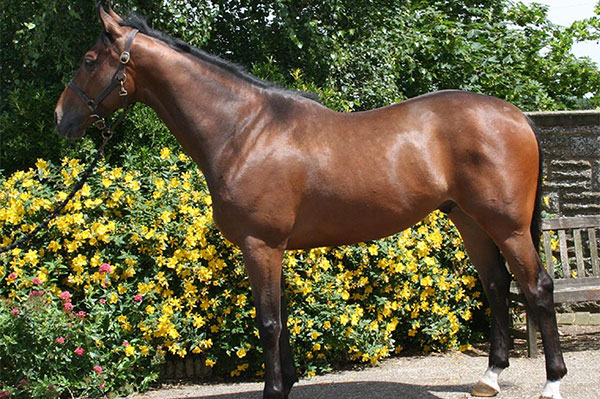
This young horse is developing nicely and although looking a picture, we would work at him carrying a bit more weight.
For the horse that needs to gain weight but despite your best efforts, does not seem to be filling out, eliminate there being a worm burden, that dentition is in good order and that you are actually feeding enough; this is something we come across regularly as some people are afraid of feeding too much in case the horse becomes more excitable.
Whilst there are guidelines as to quantities to feed per day, some horses naturally require higher amounts due to their temperament and/or metabolic rate. However don’t just give a bigger feed as all this serves to do is speed up its passage along the digestive tract (and so inefficient absorption) – l give an extra feed per day instead or feed a more concentrated ration.
Some horses just do not respond to certain feeds so experiment with different brands; there are those that prefer a mix to cubes, it may be that you are over-doing the supplements which is having a negative effect by interfering with how vits and mins work together, or it may be that your horse is too warm or too cold.
If the problem persists then it could be that there is an underlying heath issue so consult with your vet; whilst a horse may not openly display the typical signs, if he has gastric ulcers, then he could have difficulty in maintaining condition.
The fizzy horse
Temperament aside, usually starch or rather too much of it lies behind excitable behaviour; starch is a ‘quick release’ energy source (as it is digested in the foregut) so cut the starch levels down to reduce energy intake and replace with a fibre such a chaff, fibre cubes or a fibre feed such as produced by Dengie Horse Feeds.
Often it is a fizzy horse that is also one that needs to gain weight so a conditioning feed is required and this is achieved by increasing the calorific intake. Again fibre is a great conditioner; oil based feeds (such as Baileys Outshine, Saracen Equi-jewel), Dengie Alfa-A with Oil and Coolstance all work well. Barley is often fed as a conditioning feed; as it contains a lot of starch it should be fed cooked so the most convenient way of feeding is via Dodson and Horrell Barley Rings. However these add volume to the feed which is not always desirable so using micronized linseed is a much more efficient way to add safe conditioning.
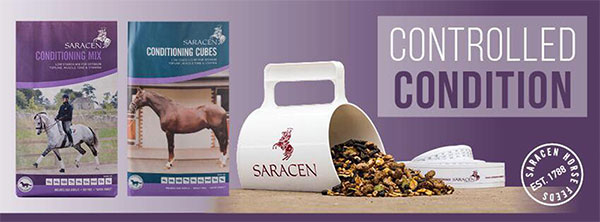
There is a huge array of formulated conditioning feeds on the market that offer “safe” calories. Mixes tend to be a little higher in starch than cubes but Saracen produce a range of conditioning feeds that do not add to the fizz factor.
If you are feeding a conditioning mix or cube just check the starch levels on the label as even so-called ‘calming’ feeds can still contain high levels of starch. This is one of the reasons we like Saracen feeds because their conditioning feeds are low in starch and non-heating
The lazy horse
Generally by nature, the thoroughbred is not lazy so if yours is, eliminate the presence of any ailments or physical issues (such as an ill-fitting saddle) that might be impacting on his performance, check that he is understanding your riding aids correctly, that you are actually providing him with enough energy to meet his workload, that you are not over-doing the supplements and of course that he is strong enough and fit enough to do what you are asking of him.
As you need to add more energy to the diet, switch to a feed with a higher level of MJ/kg or if you are also seeking a bit more spark then boost the ration with some carbohydrates to provide quick-release energy. Oats remain one of the best feeds for providing that extra kick.
‘Hay belly’
If your horse starts to develop a ‘hay belly’ this is not necessarily because you are feeding him too much hay/haylage but because the forage has been produced from late cut grass; older grasses have much tougher stems that take longer (and are harder) to digest. It also lacks quality protein so the horse is not receiving adequate nutrients to produce strong muscle. Hay belly can readily be rectified by feeding better quality forage and checking the protein content of the diet. Alfalfa-based hay replacers are ideal alternatives if you struggle to source good forage as you are providing fibre and protein in one.
Horses with Exetional Rhabdomyolysis Syndrom [ERS] or Pollysaccharide Storage Myopathy [PPSM]
These are complex conditions which affect the muscles and require veterinary intervention to treat initially, then it is a case of managing them.
Feeding should comprise of:
Do not feed cereals and keep sugar levels down so no growing grass. There are many dried grass products available some of which may be suitable. Racefit from Saracen provides low starch levels for the working horse (don’t be put off by the name!) and of course there is something in the Dengie range to cater for the variety of nutritional needs whether it be condition, energy and so on.
The fussy feeder or limited appetite
These can actually be the worst to feed and owners readily become very frustrated as well as distressed when their horse just won’t eat. Owners will often line up feed bins to see what the horse makes a bee-line for only to find when offered the same food the next day, the horse turns his nose up. Such horses must not be over-faced; very little and very often is the way to get them eating. Usually, something sweet in the diet does the trick so adding apple juice, ribena and even sugared water can often work. Fresh pulled grass and other succulents such as apples and carrots can be chopped and added to small rations. Grass nuts and dried grasses are sweeter than alfalfa products; Saracen Re-leve is perfect for horse that has a very limited appetite as it is nutrient rich with a good energy level for the working horse but is also very low in starch and is cereal free so ideal too for those with other ‘eating disorders’.
The fussy feeder is often a stressy type, which picks at its food, grabbing a mouthful and then rushing to the door. This is not good mentally or physically. The best way to combat this is to feed near a door or window so that the horse can eat and still see what is going on at the same time.
Some horses, if they are feeling vulnerable or stressed, will often eat more under cover of darkness. Whilst ideally you need to encourage these sorts of horses to eat during the day too, as long as they are eating plenty overnight is initially all that matters.
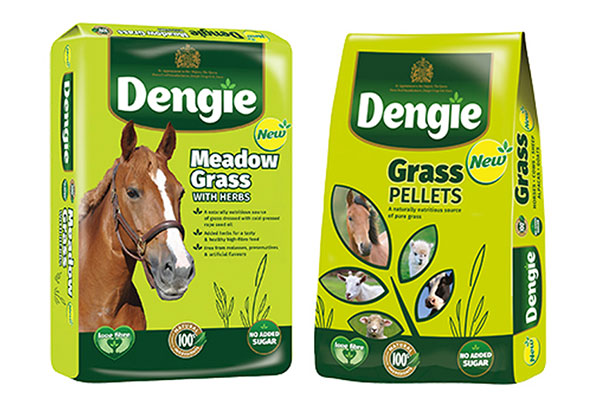
The two new grass products from Dengie Horse Feeds serve to fulfil numerous feeding options but being sweet tasting are excellent for tempting the fussy eater.
The ulcer prone horse
Ulcers seem to lie at the door of every malady and misbehaviour these days and indeed more horses than ever are falling victim to them. The symptoms presented by individuals can vary considerably whether by way of behaviour, poor performance, poor condition, general un-thriftiness or poor hoof condition and a lack-lustre coat. With so many specialist low sugar feeds on the market and a better understanding of the best management practices, you could be forgiven for thinking that ulcers should not be such a major issue in the horse world these days. However even horses that have the absolute perfect diet, management and exercise routine are falling victim – but why? Much more research is required in order to answer this question but we believe that, in part, the use of agrochemicals is an influencing factor.
As the horse is a trickle feeder, this means that there is an ever ready and on-going supply of digestive fluids being continually secreted into the stomach – at the rate of 1.5litres every hour! Saliva helps to neutralise the acid but is only produced when the horse is eating, so left without food for long periods ulceration of the delicate lining of the stomach is quite likely as there is nothing to neutralise the harmful acid. Bile can be also be refluxed into an empty stomach and that in itself can cause ulceration. The deprivation of food results in very rapid development of the ulceration – in as little as 24 to 48 hours.
Despite the bad press it is getting at present, alfalfa remains the single best feedstuff for the ulcer affected/ulcer-prone horse. Alfalfa is a great acid buffer and also contains good levels of calcium, which is important for the treatment, and management of ulcers. Increasing numbers of people are reporting that their horse is alfalfa intolerant. The amounts fed in the UK are extremely low compared to say, in the USA where much higher levels are fed – because they feed alfalfa hay – so an intolerance is not actually all that likely; if a control study could be done other contributory factors would be found to explain the symptoms owners experience. Inevitably there will be a few horses that are genuinely intolerant but in the main it is more likely that there is another cause.
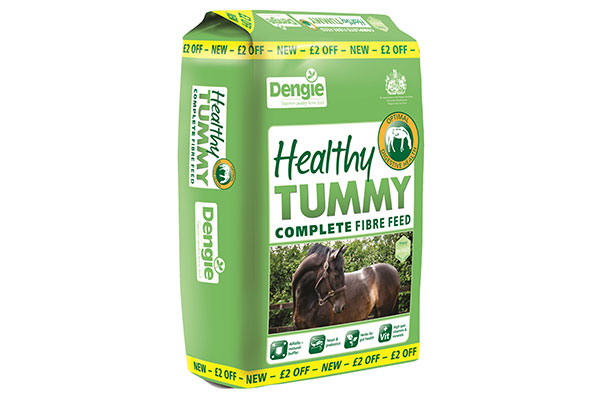
Dengie Health Tummy is formulated for horses with gastric ulcers and/or EGUS symptoms.
There is quite an array of products for addressing the symptoms caused by ulcers and also for improving hindgut function. Some products inhibit acid production whilst others provide a coating to protect the delicate lining of the stomach and intestine. Products such as Equishure from Saracen and Succeed, which are the most popular, support the gut ‘friendly’ bacteria by helping to maintain an optimum environment that will aids the growth and stability of the microbial population. The addition of brewers yeast to the diet does seem to benefit many horses with improvement in behaviour and improved gut function.
So your horse has arrived
He may well be unsettled for a few days and not wanting to eat what you would like him to, but don’t fret; as long as he is drinking, will eat some hay/haylage or some fresh-pulled grass, he is not going to keel over. Offer his alternative forage sources so he has a mix of long and short fibre to choose from.
Some horses are not happy in a barn environment and feel threatened by the close proximity of others so if stable sides are open, provide some privacy by at least partially covering up them up. Intimidation from neighbours is often the cause of a horse not eating properly.
Don’t overface him; introduce new feed gradually. Forage is ultimately the most important feedstuff to give, followed by fibre. Some horses have to be encouraged to eat chaffs/fibre feed so to begin with a fibre cube is the idea choice until you can wean him on to short-stem fibre.
Don’t be tempted to add every supplement going. If you are not feeding a compound feed at optimum levels, just add a balancer. Poor hooves will improve with good nutrition (alfalfa is once again one of the best feeds for improving hoof quality due to its protein and calcium content) and farriery; external applications are often just quick fixes. A dry coat and skin will be improved with the addition of linseed or a balancer.
Many of you will opt to feed some kind of ‘calming’ product. What works for one doesn’t for another, and metabolism and the uptake of certain vits and mins is also influential. Depending on the formulation of the product you use, you could well throw the feed ration out of balance leading to other issues.
In order to build muscle, quality protein is required so don’t be afraid to provide a protein-rich diet. But don’t expect feeding along to give you the showring topline – as this ultimately comes from correct schooling.
As training progresses, it may well be necessary to adjust our feeding programme. Your horse is going to change a lot; the once highly-strung horse will settle, the horse may no longer struggle to gain weight – he may need a bit more fuel in the tank and so on; don’t be afraid to adjust the diet accordingly. It is also great to keep a photographic record so you can monitor changes in your horse.
If you are having difficulty with compiling a diet don’t be afraid to seek advice. We are happy to have a chat and remember that there are dedicated feeding helplines available.
* * * * * * *
Personally we elect to use Saracen and Dengie Horse Feeds as we like the sound, factual, properly researched advice and information provided as well as their ethical approach to the production of quality products; they work for us and how we produce horses entrusted into our care but it is really personal choice usually based on past experience, recommendation, helpline advice, ease of availability and of course cost that helps people decide on which products to go with.
We would like to thank Lizzie Drury from Saracen and Katie Williams from Dengie for their assistance with this two-part feature.
Fred and Rowena Cook
Next month Fred and Rowena will be covering cover lunge and long reining work and if you have any queries regarding the topic or any general questions drop us an email at enquiries@letstalkhorses.co.uk
Thoroughbred Training Consultants – Equine Management and Training
Inc Rehoming Racehorses – A Life After Racing
RoR Approved Racehorse Retrainers
Retraining Consultants to Greatwood Charity
UK Agents: Ardall Equine & Rider Safety System
Authors: “Re-Educating Racehorses – A Life After Racing”
To find your own ex-racehorse, please visit Source an Ex-Racehorse